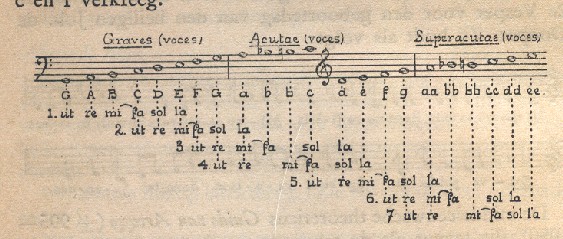|
H-mol |
Back |
|
If H turns out to be B and B turns out to be Bb Since living and playing in germany i became aware of the difference in note names between germany and the rest of the world. Something that can be very confusing, especially when talkin to other musicians here. What is the case: in germany the 'H' is the 'B' in the rest of the world and the german 'B' is the Bb in the rest of the world. Guido van Arezzo One of the fathers of the modern musical notation is Guido von Arezzo (995 - 1050). To capture the gregorian melodies that were song in his time, he developed a notation system. As bases he used a group of six notes (hexachord). The names were the first syllable of each sentence of the johannes-hymn from the second vesper. Ut (later Do), Re, Mi, Fa, Sol, La.
c (until a): hexachordum naturale
 There is a problem though. Given the distance between the notes, the B in the Hexachordum Durum (starts at F) sounded a half note lower then the B in the Hexachordum Molle (starts at G). To show the difference Guido used two different notations for the B in the german countrys the
Source:
|